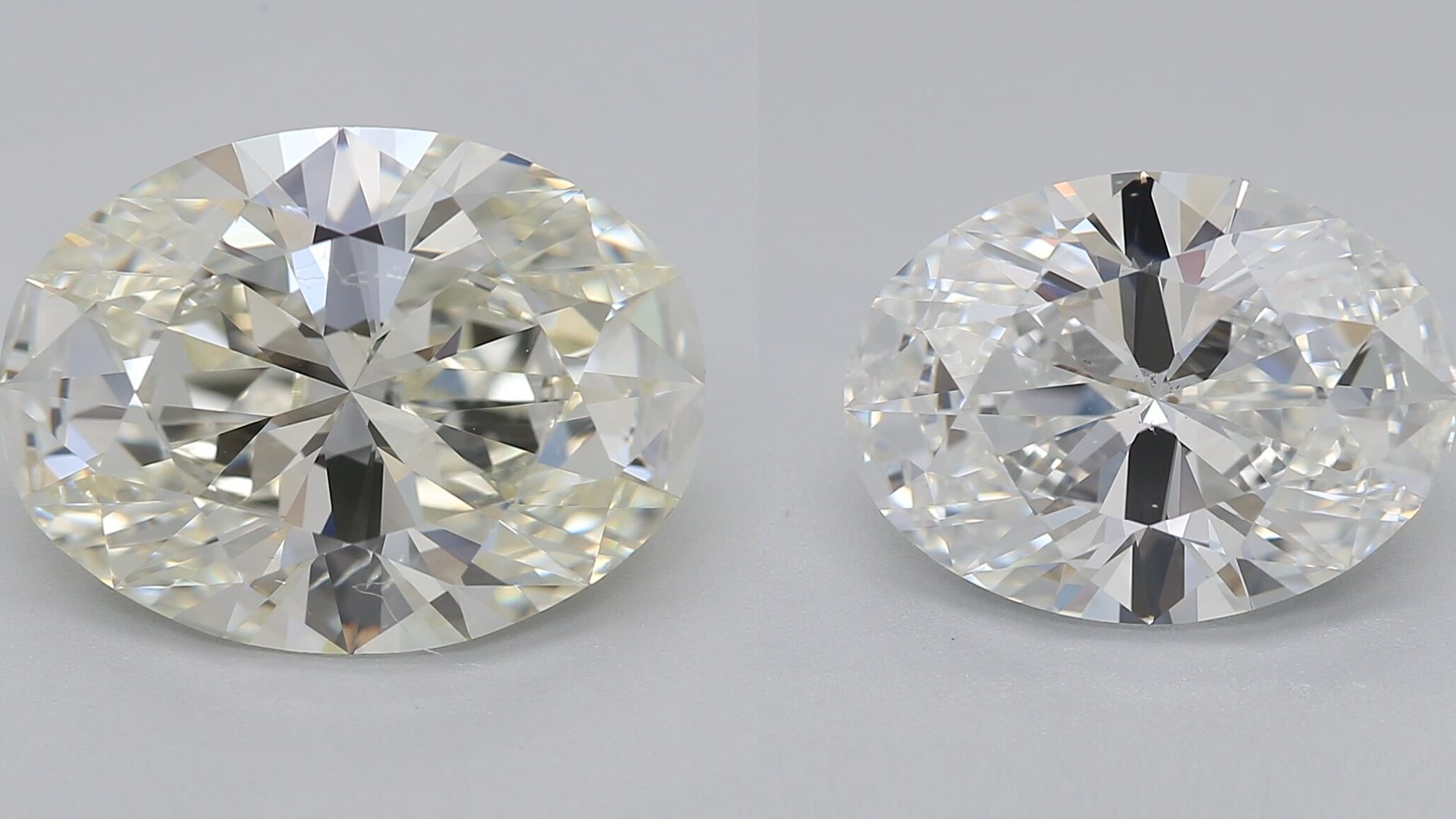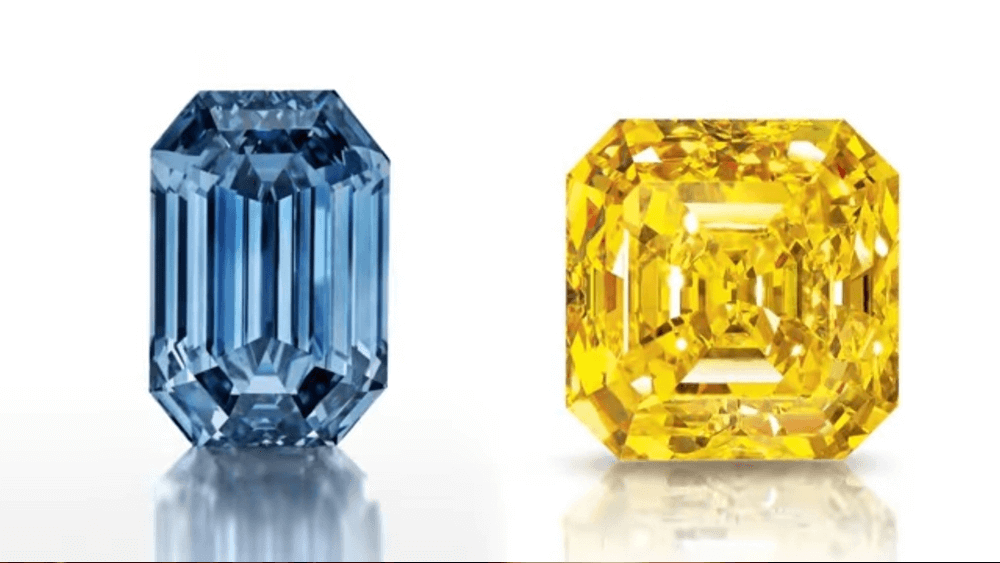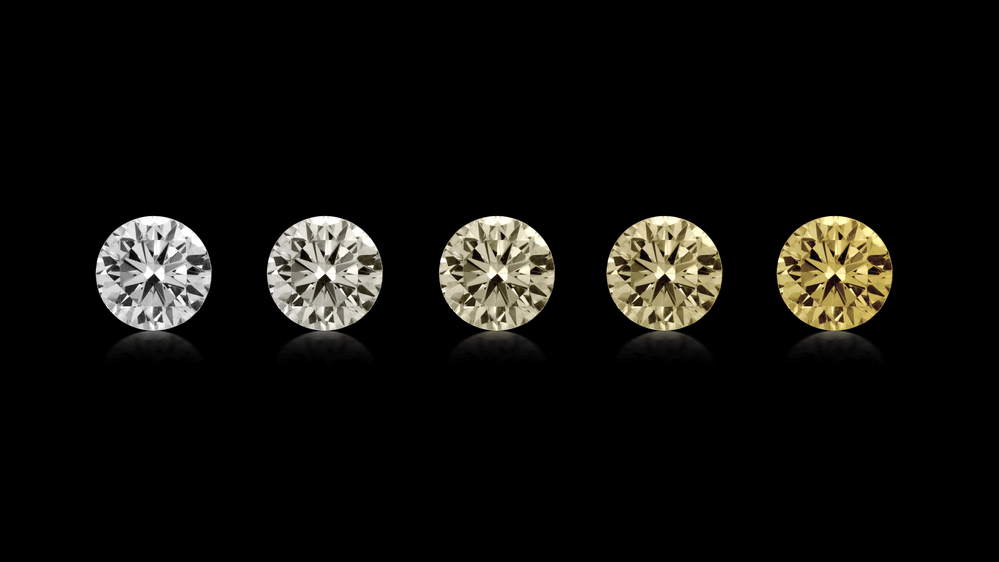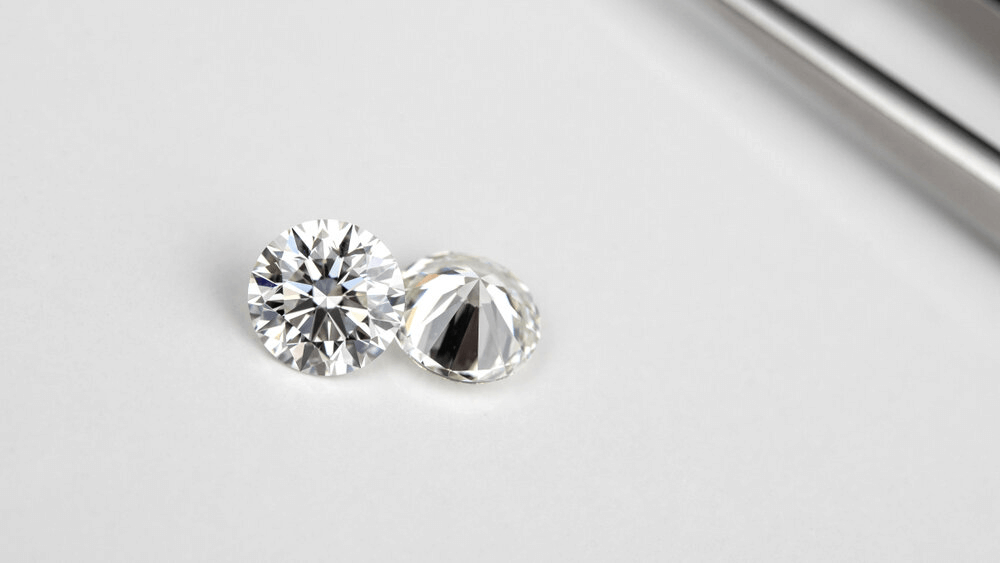What You Don’t Know About K Color Diamonds

By Gary A.

Edited by Olivia H.
Published Jul 18, 2022
Edited on Dec 17, 2024
K Color Diamonds can present an interesting option for those mindful of budget, but their faint yellow tint is something to carefully consider depending on personal preference and the chosen setting.

Navigate This Guide:
- 7 Quick Tips When Examining K Color Diamonds in Engagement Rings
- Introduction
- Defining K Color Diamonds
- K Color Diamonds Appearance and Quality
- K Color Diamonds Light Performance
- Budget Considerations: The Value of K Color Diamonds
- Our Expert Take
- 7 Frequently Asked Questions About K Color Diamonds with a Cautious Perspective
Before we dive deeper into the specifics, here are some practical tips to help guide your decision-making process:
7 Quick Tips When Examining K Color Diamonds in Engagement Rings
When contemplating a K color diamond for an engagement ring, it’s essential to be mindful of how certain elements can underscore its faint yellow tint. Here are pivotal considerations to ensure you’re making a cautious decision:
- Tip 1: Be Wary of the Metal Color in the Ring Setting
Metal Influence: The ring’s metal color can amplify the yellow tint of a K color diamond. While yellow and rose gold may somewhat mask the tint, white gold or platinum settings can make it more pronounced.
Seek Harmony Cautiously: Opting for a metal that complements the K color diamond’s hue requires careful consideration to avoid accentuating the color further. - Tip 2: Scrutinize the Diamond Shape and Cut
Shape Matters: The shape of the diamond can exacerbate the visibility of its color. Round brilliant cuts might mitigate the tint to some extent, but step cuts like emerald or asscher may highlight it.
Cut Quality Concerns: Although a high-quality cut can improve a diamond’s sparkle, it may not fully disguise the color in a K color diamond. Prioritize cut quality but remain aware of its limitations in masking color. - Tip 3: Consider the Implications of Size on Color Visibility
Size vs. Color: Larger K color diamonds tend to exhibit their color more conspicuously, which could be a detractor for those sensitive to color nuances.
Balance with Caution: Desiring a larger diamond may necessitate compromising on color visibility, an important consideration for discerning buyers. - Tip 4: Evaluate Diamonds Under Different Lighting Conditions with Skepticism
Lighting Deception: Viewing the diamond under various lighting conditions is crucial, as some lights can hide or accentuate the yellow tint.
Realistic Expectations: Ensure you evaluate the diamond’s color in lighting conditions that most closely resemble where the ring will be worn, keeping in mind that indoor lighting might not reveal the full extent of the color. - Tip 5: Cautiously Compare with Higher Color Grades
Insightful Comparisons: Aligning a K color diamond alongside higher color grades can starkly reveal the differences in color, potentially influencing your decision against a K color diamond.
Subjectivity in Perception: While comparisons can be eye-opening, personal preferences vary. However, for those with a keen eye for color, higher grades might be more appealing. - Tip 6: Be Mindful of the Impact of Fluorescence
Fluorescence Concerns: Fluorescence can sometimes improve the appearance of a K color diamond by making it seem whiter, but this can also lead to unpredictability in its appearance under different lighting conditions.
Careful Evaluation Needed: Understanding the fluorescence in a K color diamond is key, but it’s crucial to consider whether its potential effects align with your preferences. - Tip 7: Prioritize Overall Appeal with Caution
Beyond Color: While the overall beauty of the diamond—including its brilliance and how it matches the setting—is important, do not overlook the impact of its color.
Emotional Connection with Reservations: Choosing a diamond that you love is essential, but ensure that your affection for the piece doesn’t overshadow practical considerations regarding its color grade.
Now that you’ve got these practical tips, use Jeweler AI below to find the perfect engagement ring that suits your style and budget:
Introduction
If you’ve already started looking into the Four Cs of diamonds in more detail, and feel as though you’re finally finding your feet in the complicated world of diamond shopping, you’re probably aware of the fact that there is no ‘perfect’ grade capable of catering to every shopper out there.
Your budget and vision for your engagement ring means that the GIA scales are open to interpretation, to a certain extent, provided you consider a very high quality cut and eye cleanliness to be non-negotiables.
This is best illustrated by clarity, and the fact that shoppers can enjoy a long spectrum of grades from FL to SI, with, in many cases, equally beautiful results.
So, when it comes to color, the same rules apply, right? Yes – but, as always, there comes a point at which you don’t want to dip any lower, no matter what budget you’re working with.
Defining K Color Diamonds
A K color diamond is simply a diamond that has been color graded at K according to the GIA color scale.
This scale runs from D to Z, and is divided into the following categories by the GIA:
| Colorless | Near Colorless | Faint | Very Light | Light |
| D, E, F | G, H, I, J | K, L, M | N, O, P, Q, R, | S – Z |
The GIA color scale is only used on clear diamonds – not on ‘fancy color’ diamonds, which can be pink, yellow, purple, green, gray, or virtually any other color – and is used to exhibit how affected the diamond is by the presence of nitrogen, which can cause a noticeable yellow or brown-ish tint in affected diamonds.
For the higher color grades, this yellow tint is not noticeable to the naked eye – and, like minor inclusions, requires ‘ideal’ lighting and magnification for skilled graders to spot.
The K grade sits a little over a third of the way down the scale, and refers to diamonds with a pretty faint tint.

K Color Diamonds Appearance and Quality
A K color diamond will almost certainly feature a tint visible to the naked eye. Even without the ideal lighting conditions and magnification, or the expert eye of a diamond grader.
This tint will, of course, be very vague, and no K color diamond is going to look yellow-yellow – it is, after all, only the first grade in the ‘Faint’ color category.
What’s more, color tends to be a lot more noticeable when the diamond is viewed from the side. Unless the diamond is heavily discolored – or, of course, a fancy color diamond – then you’ll be able to perceive the presence of color a lot more when you’re not staring straight down through the table of the diamond.
What’s more, some shapes hide color better than others. If you’re interested in a step cut diamond, then a K color will be more noticeable than it is in brilliant cuts.
K Color Diamonds – Too Yellow?
Yes – for most jewelers, K diamonds sit a little too far down the color scale for comfort.
K Color diamonds are significantly lower in price than diamonds. They represent the first grade of the Faint color category, which means that you’re no longer paying a premium for a diamond that is considered as close to colorless as possible.
These Near Colorless diamonds are thought of as the best possible choice for most shoppers, since they cost a lot less than Colorless (D-F) diamonds, without showing any visible tint of yellow or brown.
This is exactly what buyers are sacrificing when they go for a K color diamond or lower. By this point, color is beginning to show, and, in all likelihood, you’ll be able to spot it yourself.
K Color Diamonds Light Performance
K color diamonds will sparkle, provided they are cut to a high standard.
Color is not a factor that impacts on a diamond’s ability to sparkle, but that’s no reason to opt for a diamond with a yellow or brown tint. Even if the diamond creates a spectacular show of fire, brilliance, and scintillation whenever the wearer’s hand moves, even a subtle degree of discoloration can significantly impact the beauty of the stone.
Sparkle is intrinsic to the value of a diamond, but it’s not everything – and color is a prime example of that.
Budget Considerations: The Value of K Color Diamonds
This depends entirely on carat weight, cut and clarity, but a good rule of thumb is to consider K diamonds to be around $500 cheaper than comparable J diamonds.
The cost reduction is not as great as you might expect, although it’s certainly tempting if you’re looking to squeeze every penny out of your budget. Nevertheless, going into the ‘Faint’ range of clear diamonds means making a sacrifice when it comes to the stone’s appearance, rather than what’s printed in the GIA report – something shoppers should never be willing to do.
Some shoppers opt to pay a little less for these diamonds, and opt for a ring setting that is purposefully designed to mask or counteract the presence of color (more on that below). But, in general, saving a few hundred dollars on this vital aspect is not worth it, even if you think you can hide that yellow undertone.
Our Expert Take
The K Color grade not the worst, but it’s a long way from being the best – and it’s a little too low on the color scale for us to comfortably recommend it.
One of the reasons eye cleanliness is such a good target to aim for (with regards to clarity and color) is because it means finding a diamond that looks better than what is printed in its GIA report. On paper, it’s a long way from perfect but, in real life, it might as well be a flawless, colorless stone.
J color diamonds do not appear to be ‘eye clean’. They feature a yellow tint that even a non-expert will be able to pick up on, although, admittedly, this will be considerably less noticeable than it is in diamonds further down the color scale.
Despite the relatively small difference in price, this can have a pretty major impact on the overall appearance of the diamond – and especially once it’s mounted in a ring setting. The bright white of platinum or white gold can throw any discoloration into sharp relief, while, as we mentioned above, the warmer tone of a yellow gold setting can reflect within the stone and actively contribute to its yellow appearance.
Our advice? Stick to the near colorless range of diamonds, and consider that your sweet spot between the high cost of a colorless stone, and the visual inferiority of a faintly colored diamond.
7 Frequently Asked Questions About K Color Diamonds with a Cautious Perspective
- What exactly is a K color diamond?
A K color diamond falls into the ‘Faint’ color range on the GIA scale, showing a noticeable yellow tint, more so than higher-graded diamonds. - Might a K color diamond appear too yellow for an engagement ring?
Yes, the yellow tint of a K color diamond can be discernible, especially in settings that don’t complement or mask the tint, such as white gold or platinum. - Are K color diamonds significantly cheaper than higher color grades?
While K color diamonds are indeed less expensive, the trade-off in visible color tint might not justify the savings for everyone, particularly those sensitive to color nuances. - How does a diamond’s cut influence its color appearance?
A well-executed cut can enhance a diamond’s sparkle, potentially drawing attention away from the color. However, it might not fully compensate for the inherent yellow tint in a K color diamond. - Can K color diamonds be considered suitable for all jewelry types?
K color diamonds might not be the ideal choice for all jewelry, especially those requiring a colorless or near-colorless appearance. Their yellow tint might be more suitable for vintage pieces or specific styles that can mask the color. - What impact does the choice of metal have on a K color diamond’s appearance?
The metal setting can exacerbate the yellow tint of a K color diamond. While yellow or rose gold may mask it to some extent, white metals might highlight the tint, potentially detracting from the diamond’s appeal. - What should be my main considerations when selecting a K color diamond?
It’s important to weigh the importance of cut quality and overall aesthetic appeal against the visible yellow tint. Also, consider how the diamond’s color might impact the overall look and feel of the jewelry piece, keeping in mind that a more color-neutral option might be more versatile and aesthetically pleasing in the long run.
FOLLOW-UP GUIDE SERIES












